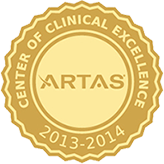Low dose laser therapy for hair loss
What is low dose laser therapy?
Low level laser therapy is a safe form of light treatment (a type of ) under investigation for a variety of health indications. It is being used to treat the genetic forms of hair loss common in men and women, androgenetic alopecia or pattern balding.
Low level laser therapy is also called red light therapy, cold laser, soft laser, biostimulation and photobiomodulation.
Low level laser therapy for pattern balding
Laser therapy used for hair loss treatment depends on devices that emit a light that can penetrate the scalp. Low level laser therapy (LLLT) uses devices with diodes that emit red light (wavelength 630-670 nanometers
Who are the best candidates for low level laser therapy for hair loss?
Low level laser therapy is intended for men and women with thinning hair or pattern baldness caused by a hereditary condition.
How is laser hair therapy supposed to work?
The hair growth cycle consists of three phases: growth (anagen phase), resting (telogen phase) and shedding (catagen phase). Hair loss in androgenetic alopecia depends on a testosterone derivative in the skin, dihydrotestosterone (DHT). Low level laser therapy is believed to increase blood flow in the scalp and stimulate metabolism in catagen or telogen follicles, resulting in the production of anagen hair. In theory:
- The photons of light act on cytochrome C oxidase leading to the production of adenosine triphosphate (ATP). This is converted to cyclic AMP in the hair follicle cells, releasing energy and stimulating metabolic processes necessary for hair growth.
- Release of nitric oxide from cells leads to increased vascularisation to the scalp distributing nutrients and oxygen to the hair roots.
- Excessive build-up of DHT is prevented.
What is the clinical evidence to show laser hair therapy is effective?
Physicians have varying views on whether or not low level laser therapy is effective. While some physicians reject its use entirely, others believe that low level laser therapy can provide benefit for some men and women suffering from androgenic alopecia (genetic baldness). It has also been suggested that it may assist a hair transplant patient’s postoperative wound healing process and expedite hair growth.
Benefits of laser therapy for hair loss
- Low level laser thereapy can be used in both men and women
- No adverse effects have been reported
- It is clean and painless
- Low level laser hair therapy is relatively inexpensive
- It requires minimal time commitment
- Some low level laser therapy devices are portable
- Hair growth may occur on the top of the head/crown and along the hairline of forehead
Improvement is reported in at least some users after 12 to 26 weeks of use, with reduced hair fall and noticeable hair growth.
How is low level laser hair therapy administered ?
Two to three times weekly treatments are typically recommended, and consist of a 8 to 15-minute exposure of the scalp to light-emitting diodes under a head cap.
Scalp treatment and massages that promote blood circulation may be used additionally as part of the program.
Proprietors of low level laser therapy services speak about the importance of regularity, which includes frequent appointments (twice a week, more or less) over a long duration (typically one year).
Please call the office of Dr. Bishara at The Paragon Plastic Surgery & Med Spa for more information on LLLT at (817) 473-2120 or visit our website and www.MarkBisharaMD.com





